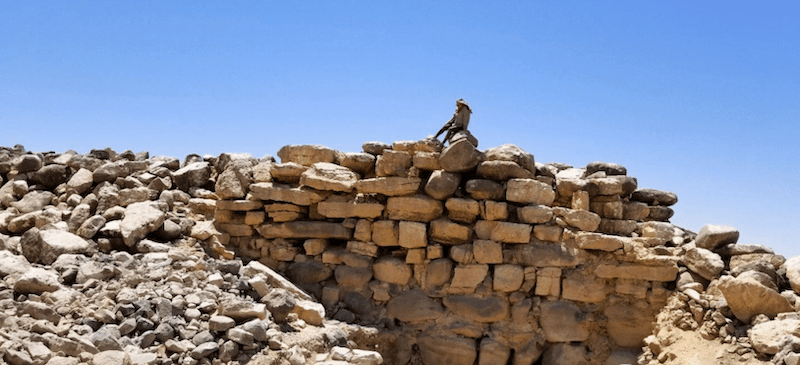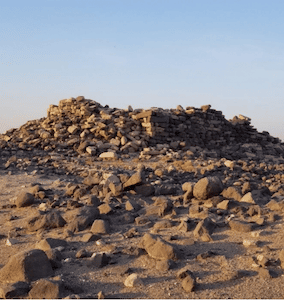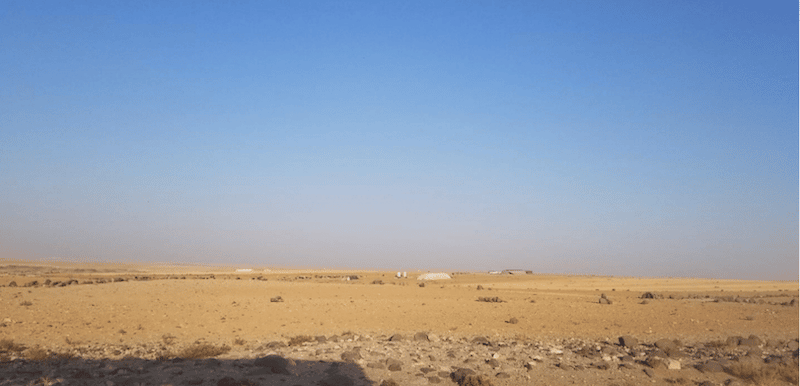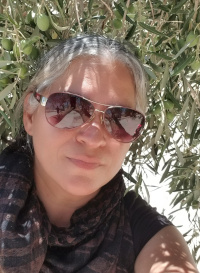
If Rocks Could Talk
Karak, Jordan is the home of the Iron I and II Moabite site of Khirbat al-Balu’a, an ASOR affiliated archaeological project that I joined through La Sierra University in Riverside, CA. At the Balu’a Regional Archaeological Program (BRAP) I was appointed as square supervisor, my first archaeological supervisory role due in part to my previous excavation experience and for my being a full season student. This was made possible thanks to the generosity of the 2022 Strange/Midkiff Families scholarship.

The first week at any excavation site is always the hardest, which I say with complete confidence since this is not my first time attending an archaeological field school or a regular excavation project. Leaving family and the comfort of one’s home behind for the pursuit of education in another country is not for the faint of heart, one must quickly acclimate to a whole new landscape, work schedule, language, culture, time zone, and cuisine. This can be physically challenging and emotionally taxing, but a very rewarding experience, nonetheless.
During the first and hardest week of the season, we received our assigned area of excavation, the Qasr (Castle), and got to meet our team members and team leaders. We had to prepare the area before excavations could begin, we first set up the soil sifts and made sure they were facing the Wadi Mujib and its fantastic sunrises to make the weeks to come more pleasant. Then came the arduous task of clearing the area of inter-seasonal debris and piles upon piles of rocks and tumble. We were lucky enough to have a constant breeze blowing from the west; the Jordanian desert was kind to the team. Once we cleared most of the rocks from our area, set up balk lines, and assigned individual tasks, we were ready to begin excavations.

The Qasr view from the west
The team clarified walls, cobbled surfaces, and doorways and found pottery sherds, stone artifacts, and faunal remains by the buckets. Any artifacts found in situ were immediately recoded using Global Positioning System (GPS), then collected for processing and laboratory analysis, though some of the stone artifacts excavated were too big to carry and were left in the field. The teams washed and sorted the excavated pottery sherds in preparation for the pottery readings, we took notes on pottery types and periods then sent the diagnostic pot sherds for publishing and the nondiagnostic sherds back to the field. We also completed daily and weekly reports in which we reviewed the strategy, implementation, and outcome of each project. And did I mention we moved more rocks?
On weekends, we had the opportunity to go on field trips to learn about castles such as Karak and Ajlun as well as other archaeological sites like Jerash and Tall al-Umayri. The highlight of the season was a weekend spent in Petra, a Nabatean city in the Wadi Musa. In Petra, we visited features such as the Treasury, the Highest Sacrificial Place, and the Monastery. We also had the opportunity to have sweet tea with many Bedouin women and men, haggled for prices at the various shops in the city, and rode a camel and a mule. This was a bit precarious for someone who is not accustomed to riding beasts of burden.

Our days in Jordan were never dull, at the site we were visited daily by large herds of sheep, goats, donkeys, and camels all being led by our worker’s friends or family who’d stop by from time to time to say hello. The Bedouin were very friendly and hospitable, they often shared Arabic sweet tea and sang songs for us, which made us feel very welcomed. The diversity of our team, their knowledge and sense of humor were the best part of the season. I said that the first week is always the hardest, but so is the last week when we have to say goodbye to the people with whom we discovered commonalities, developed friendships, and shared inside jokes for the past four to seven weeks. These relationships are the rewards we get to treasure when we leave our comfort zone in pursuit of knowledge and adventure in faraway places.

Read more about the Balu’a Regional Archaeological Project (BRAP).
American Society of Overseas Research
The James F. Strange Center
209 Commerce Street
Alexandria, VA 22314
E-mail: info@asor.org
© 2023 ASOR
All rights reserved.
Images licensed under a Creative Commons Attribution-NonCommercial-ShareAlike 4.0 International License
COVID-19 Update: Please consider making payments or gifts on our secure Online Portal. Please e-mail info@asor.org if you have questions or need help.
